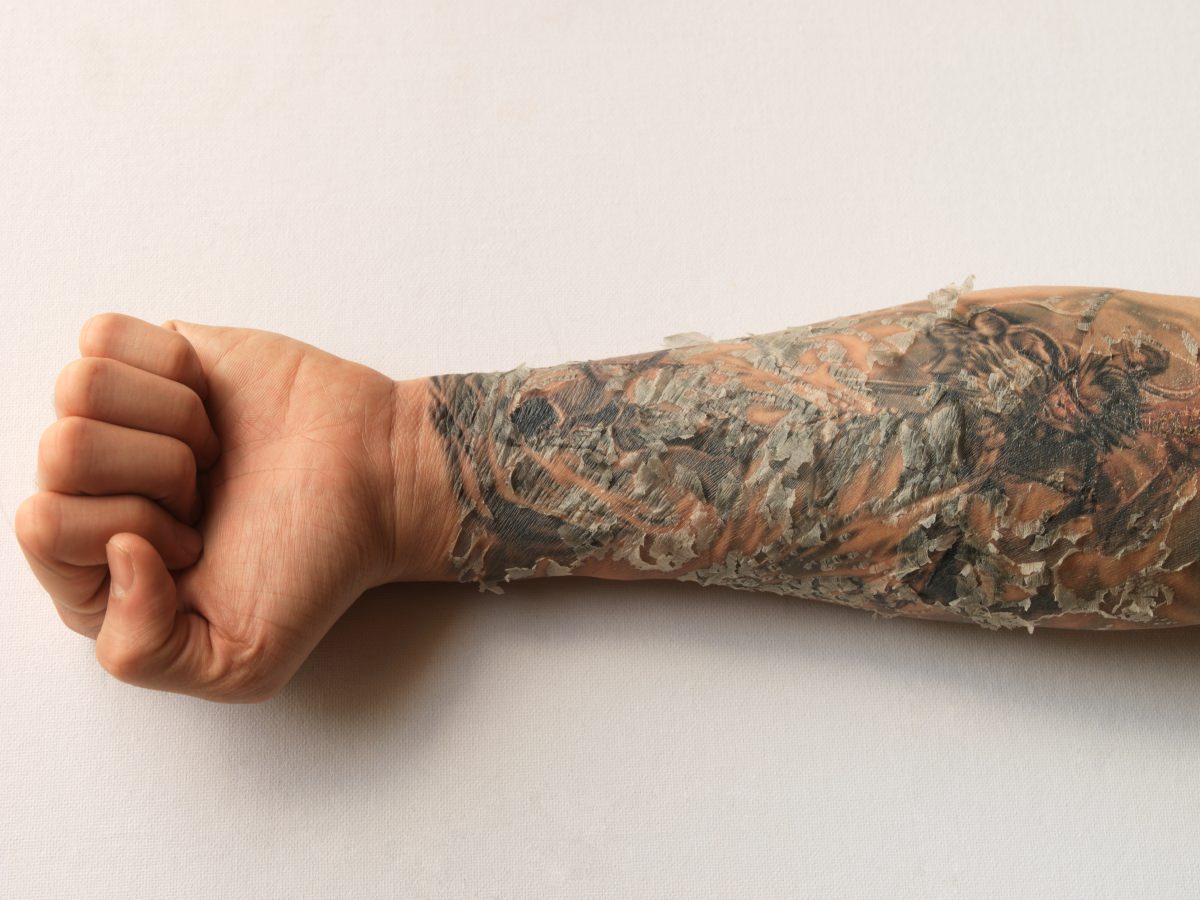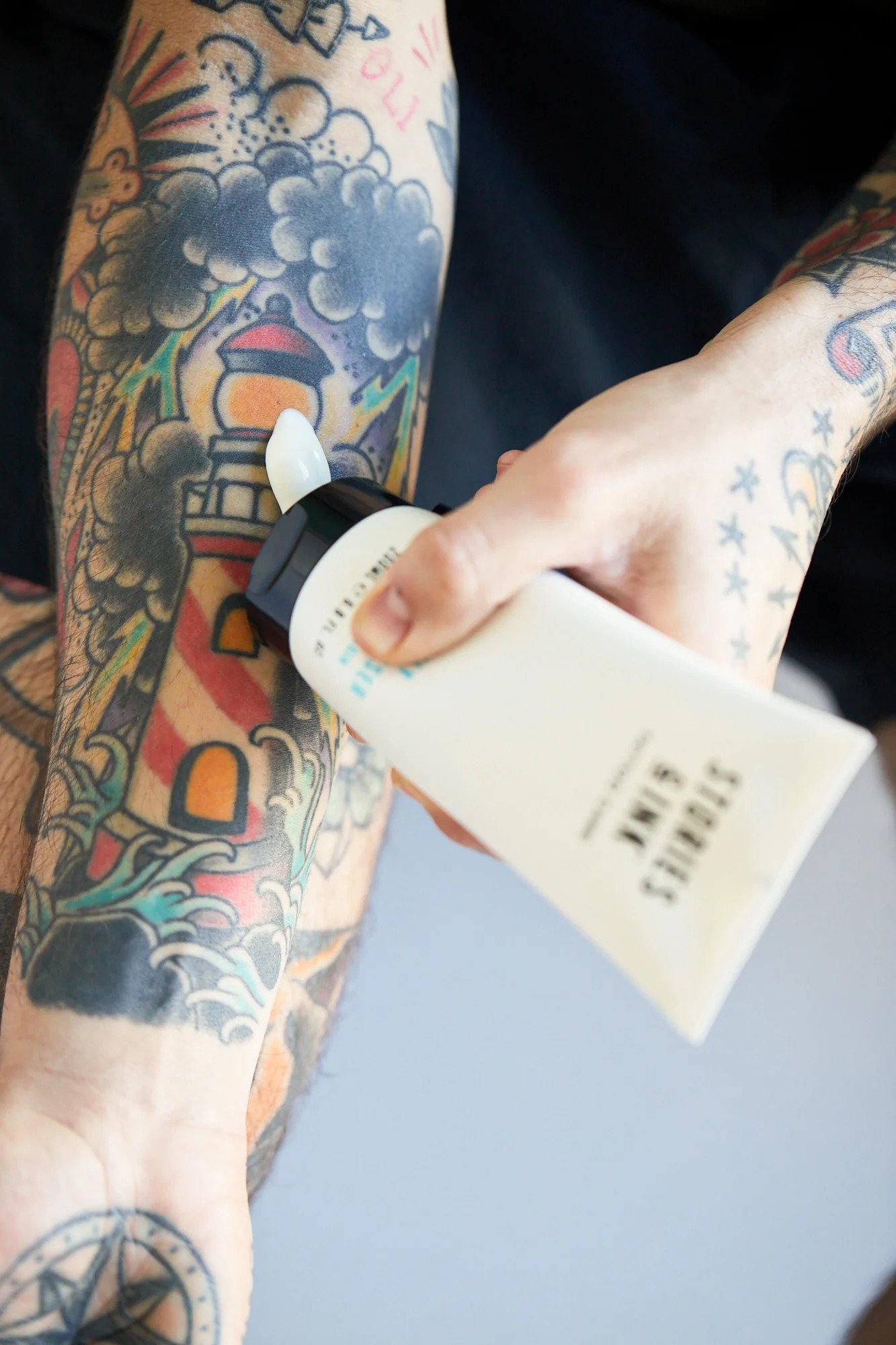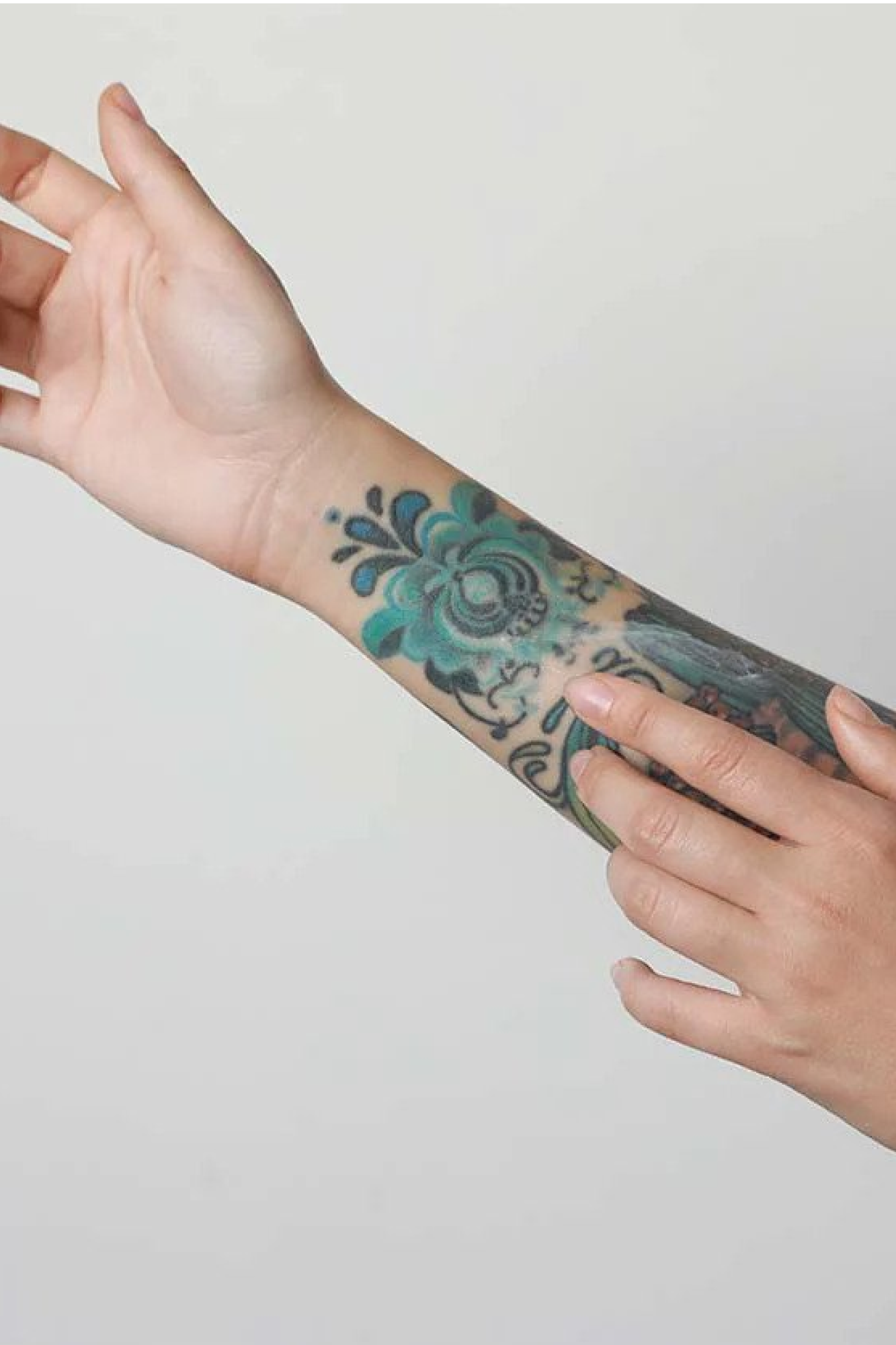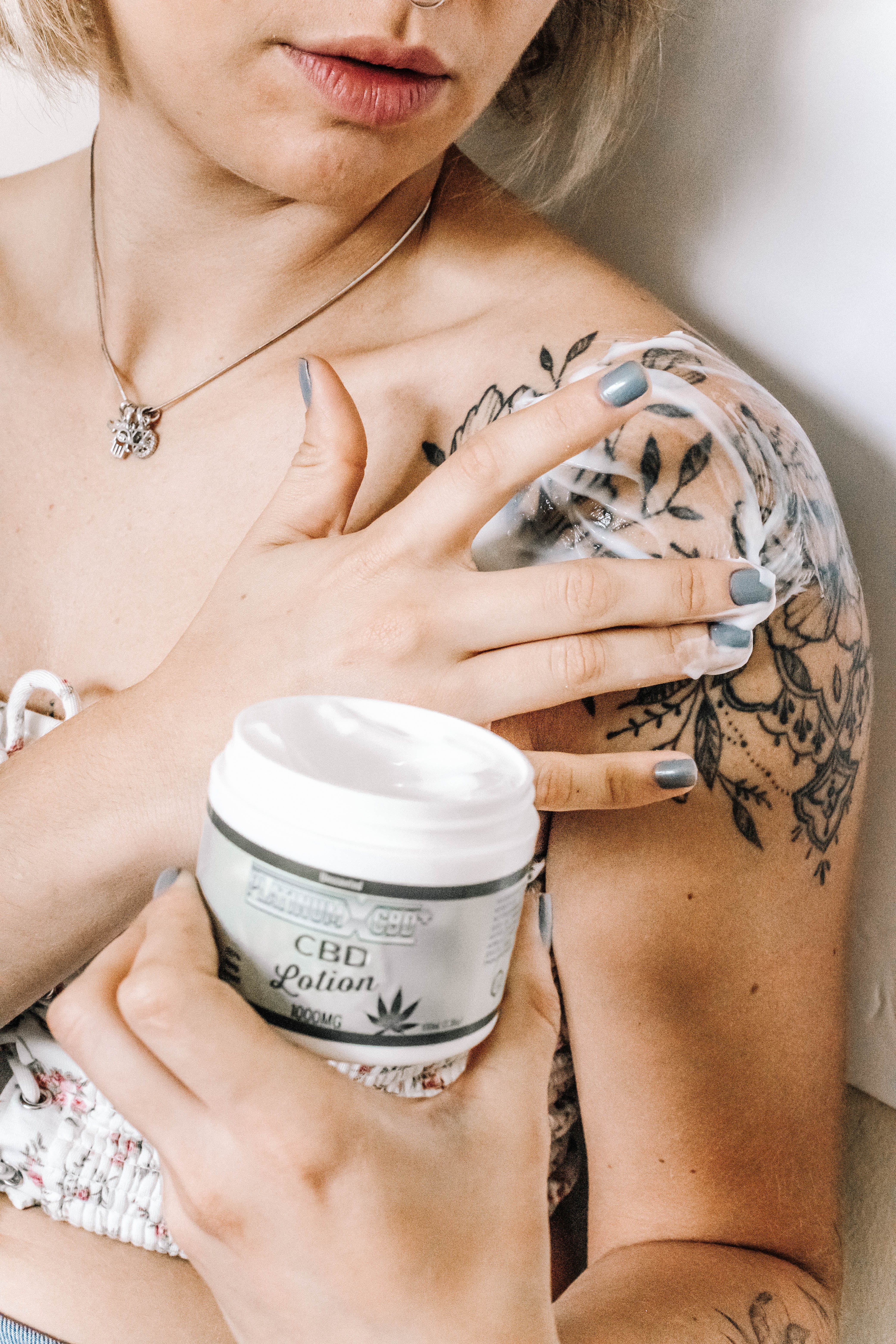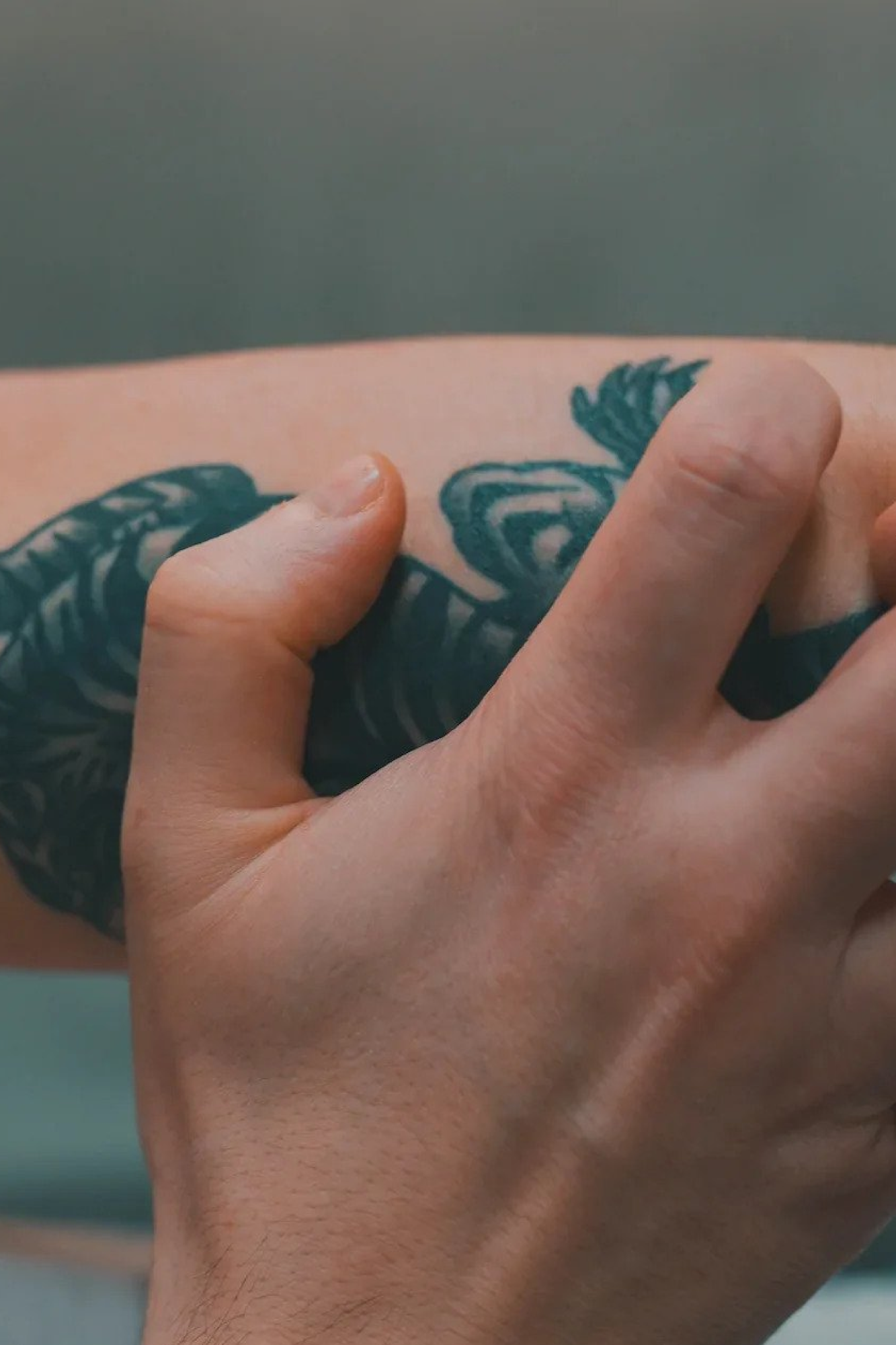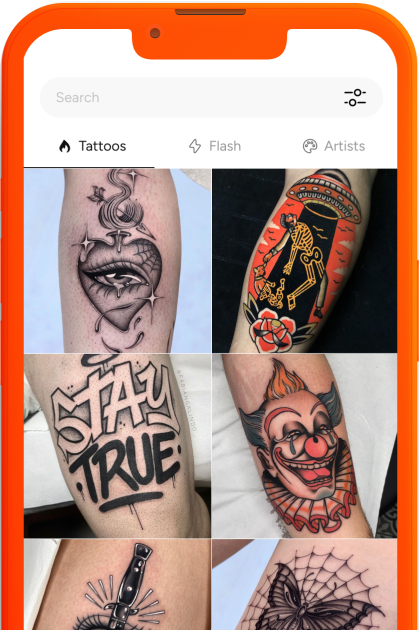Long-Term Aftercare Tips
Once your tattoo has successfully traversed the healing process, the focus shifts to long-term maintenance. Follow these tips to ensure your tattoo remains a vivid piece of art:
Hydration is crucial for overall health and skin elasticity. Drinking plenty of water supports your body's healing processes and helps maintain the quality of your skin, indirectly benefiting your tattoo.
Always use a mild, fragrance-free soap or a specially formulated tattoo cleanser to clean the tattooed area. Brands like Dr. Bronner’s 18-in-1 Hemp Baby Unscented Pure-Castile Soap or Dove Sensitive Skin Beauty Bar are often recommended by tattoo artists for their gentle yet effective cleansing properties.
During the initial healing period, some artists recommend using A+D Original Ointment for the first day or two, then transitioning to Aquaphor Healing Ointment. Others may suggest Dr. Bronner’s Unscented Organic Magic Balm. Ensure that the chosen ointment allows for proper air flow to the tattoo and doesn't trap moisture.
While it's safe to continue using Aquaphor or Dr. Bronner’s during the first week, you can typically switch to lotion afterward. Look for lotions that are free of fragrances, ethyl alcohol, and other additives that could dry out your skin. Lubriderm Daily Moisture Lotion or Cetaphil Moisturizing Lotion are commonly recommended by tattoo artists for their hydrating properties.
During the initial healing process, it's best to avoid products that are 100% petroleum-based, such as original Vaseline. These products can be too thick on the skin, potentially trapping moisture and hindering air flow, which is essential for the healing process. Additionally, petroleum-based products without breathable ingredients may contribute to ink fading
Addressing Complications During the Healing Process
While the majority of the healing process is straightforward, its essential to be aware of potential complications. Here are some common issues and how to address them:

